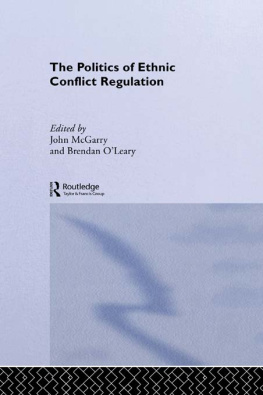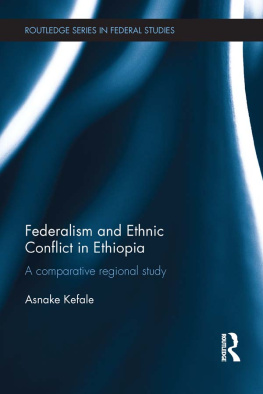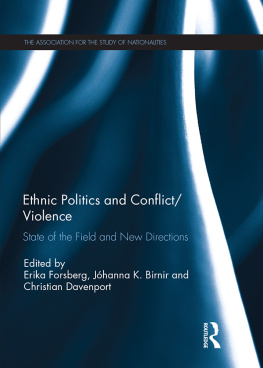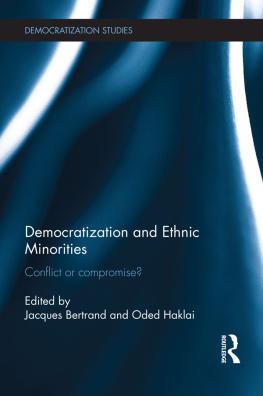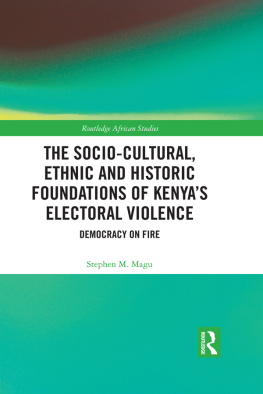ETHNIC CLEAVAGES AND CONFLICT: THE SOURCES OF NATIONAL COHESION AND DISINTEGRATION
For my sons, Milosh and Ivan
Ethnic Cleavages and Conflict: The Sources of National Cohesion and Disintegration
The case of Yugoslavia
DR GOJKO VUCKOVIC
Center for Multiethnic and Transnational Studies
University of Southern California, Los Angeles
First published 1997 by Ashgate Publishing
Reissued 2018 by Routledge
2 Park Square, Milton Park, Abingdon, Oxon, OX14 4RN
711 Third Avenue, New York, NY 10017, USA
Routledge is an imprint of the Taylor & Francis Group, an informa business
Copyright Gojko Vuckovic 1997
All rights reserved. No part of this book may be reprinted or reproduced or utilised in any form or by any electronic, mechanical, or other means, now known or hereafter invented, including photocopying and recording, or in any information storage or retrieval system, without permission in writing from the publishers.
Notice:
Product or corporate names may be trademarks or registered trademarks, and are used only for identification and explanation without intent to infringe.
Publishers Note
The publisher has gone to great lengths to ensure the quality of this reprint but points out that some imperfections in the original copies may be apparent.
Disclaimer
The publisher has made every effort to trace copyright holders and welcomes correspondence from those they have been unable to contact.
A Library of Congress record exists under LC control number: 97070896
ISBN 13: 978-1-138-33412-0 (hbk)
ISBN 13: 978-0-429-44553-8 (ebk)
Contents
Writing a book is a lonely scholarship process as well as a lengthy adventure in questioning the existing knowledge and theories about the phenomena humankind are facing today. Full commitment, motivation, and intellectual and physical strength are preconditions for success. In addition, such an adventure is possible to achieve only if one finds love and support from his family I found it in my family. The love of my sons, Milosh and Ivan, and my wife, Ivana, made the venture of writing this book possible. The love and strength I got from my parents, Milos and Zorka, and my brother, Vladimir, were essential in my scholarship endeavors.
The academic environment I found at the University of Southern California, Los Angeles, contributed the most to finding and addressing the right questions for my book. I am particularly indebted to Professor Catherine Burke, Professor Gerald E. Caiden, Professor Chester Newland, and Professor Steven Lamy for their suggestions and encouragement. My special thanks go to the Dean and Professor of the School of Public Administration, Jane Pisano, and Professor Peter Robertson, who in their own way supported and encouraged my scholarship.
Special thanks also go to the Associate Director and the Director of the Center for Multiethnic and Transnational Studies at the University of Southern California, Professor H. Eric Schockman and Professor Michael B. Preston I am indebted to these two scholars for my affiliation with the Center Their support was unconditional. The challenging intellectual and working environment and the interaction with the scholars at the Center added significant contributions to my work. In particular, I am thankful to my colleague Renford Reese, with whom I shared the everyday challenges of scholarship and research. My special thanks also go to Anne Stockemer for her editorial assistance.
Finally, writing a book would not be possible without recognitions, fellowships, scholarships, and awards from institutions interested in a scholars field of endeavor. For their interest, my thanks go to the following institutions: Institute for the Study of World Politics in Washington, D.C.; The Jewish Vocational Service of Cleveland (Morris Abrams Award in International Relations); and the School of Public Administration, University of Southern California.
The revival of ethnic cleavages and increased tensions is one of the major problems for todays community of nations. Processes of democratization in the aftermath of the Cold War in some countries have revealed old ethnic, religious, and cultural differences and animosities; these have led to the ethnic violence and intrastate wars that jeopardize the traditional concepts of nation-states and world security. The administrative state and state institutions of former socialist states, once relieved of central authoritarian leadership and one-party domination, did not have the capacity to accommodate diverse claims of constituent ethnic groups.
Fundamental assumptions of western democracies about the feasibility of the administrative state to accommodate diversity, which are based on the stability of the greater society on whose behalf it serves and some form of consensus on how that state and its administrative system should operate, may not be valid in the case of former socialist countries. Yugoslavia presents such a case where these fundamentals were lacking, although superficially all looked fine on the surface. All the apologists for Yugoslavia, like Carol Pateman and Ichak Adizes, misled the academic community by merely repeating or justifying the ideological rhetoric on the feasibility of a socialist self-management system to develop the capacity of an administrative state and a broader social and political environment to deal with a diverse multiethnic society.
Horowitz (1985) has used a concept of ethnicity to refer to a highly inclusive (and relatively large scale) group identity based on some notion of common origin, recruited primarily through kinship and typically manifesting some measure of cultural distinctiveness. Ethnicity can embrace groups differentiated by color, language, and religion. It covers tribes, races, nationalities, and castes.
Ethnic conflict is a phenomenon present in all multiethnic societies. It may be manifested in violent or nonviolent forms. Under certain conditions, ethnic conflict may turn to ethnic violence, which can threaten the political and social order of respective nation-states. The worst case scenario happened in the former Yugoslavia (referred to as Yugoslavia) As a result, Yugoslavia disintegrated. The potential for violence, however, exists all over the world. I believe that the violence that has occurred in places such as Yugoslavia presents a serious threat worldwide to peace and security We all (scholars, practitioners, and citizens) should be concerned and responsible for creating an environment where this kind of conflict can be constrained, contained, and eliminated. For this reason I also believe that the ultimate goal of scholars of ethnic conflict should be to find an answer to prevent the further escalation of ethnic violence in the world. In order to provide support to all parties involved in creating peaceful solutions, it is necessary to create specific models in approaching these kinds of conflicts. To achieve this, one needs to understand the sources of possible ethnic conflicts and both the domestic and the international parties involved.
Ethnic conflict in the world
There are very good reasons why ethnic violence and the challenges of peacemaking should be major preoccupations of scholars and policymakers Since 170 A.D., there have been 471 wars in each of which at least 1,000 people were killed. Ninety percent of the approximately 100 million deaths recorded in these wars occurred after 1900 (Montville, 1989). A new wave of warfare has occurred in the 1990s, and most of this contemporary violence has a strong ethnic base.


